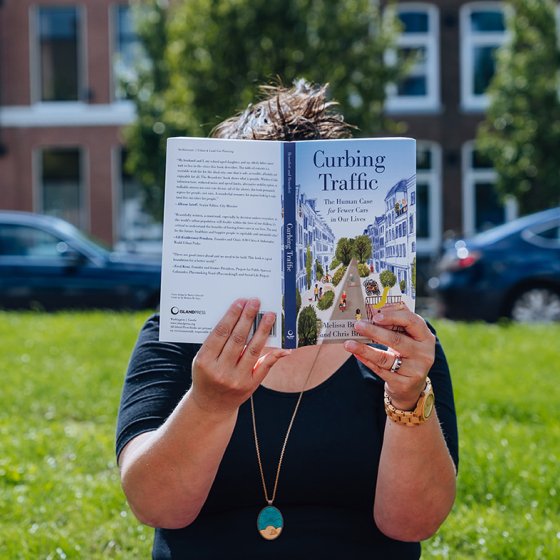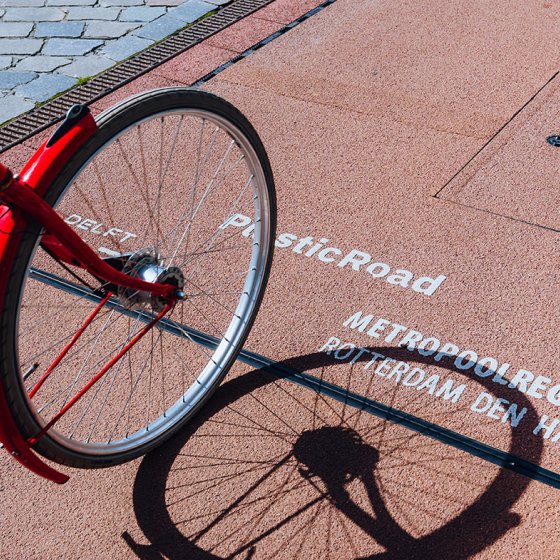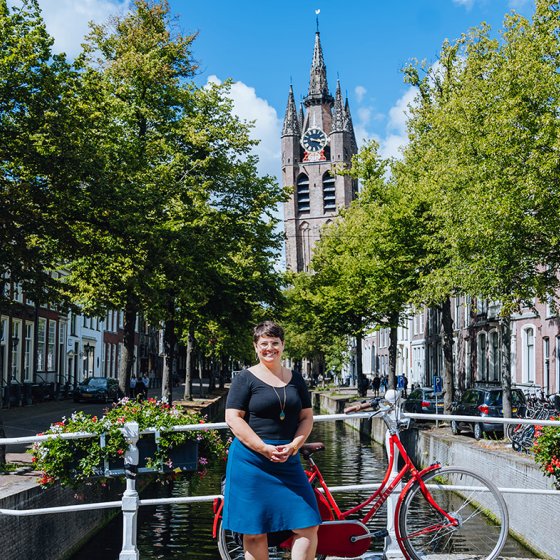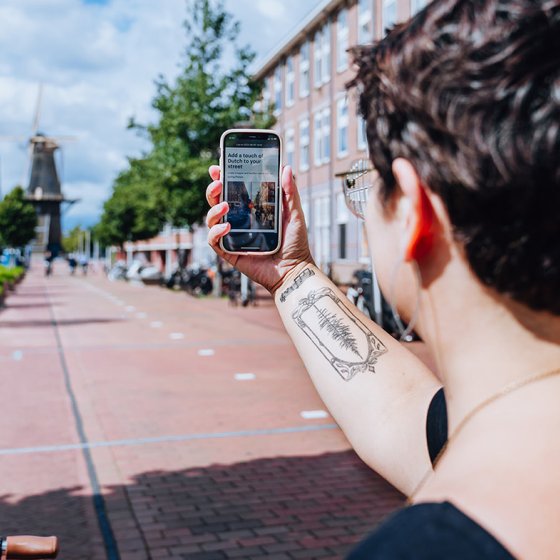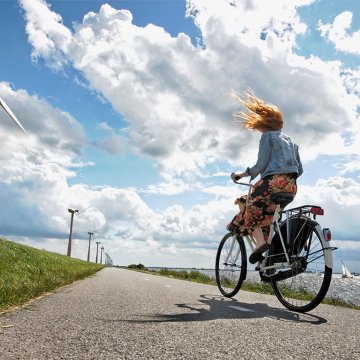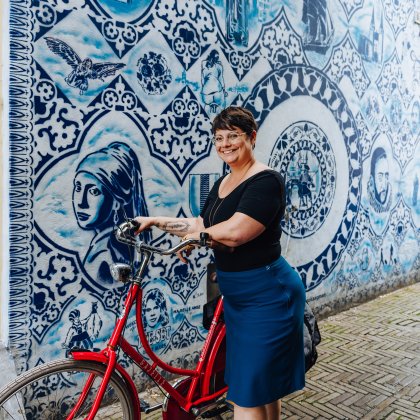
Melissa Bruntlett
Canadian promotes the blueprint of Dutch cycling culture
If you don't use the car all that much, you might as well get rid of it. That was Canadian Melissa Bruntlett’s reasoning when she lived in Vancouver. It was a decision that inadvertently led to a successful career as an urban mobility activist and cycling advocate. After an introduction to the Dutch cycling culture, she decided to move to Delft with her family.
Bring yourself, Melissa will do the same
Blueprint of a cycling nation
‘When a new school year starts in Delft, the bike paths fill up with 30,000 students and employees of the university.’
From picturesque to high-tech
'This is possible anywhere'
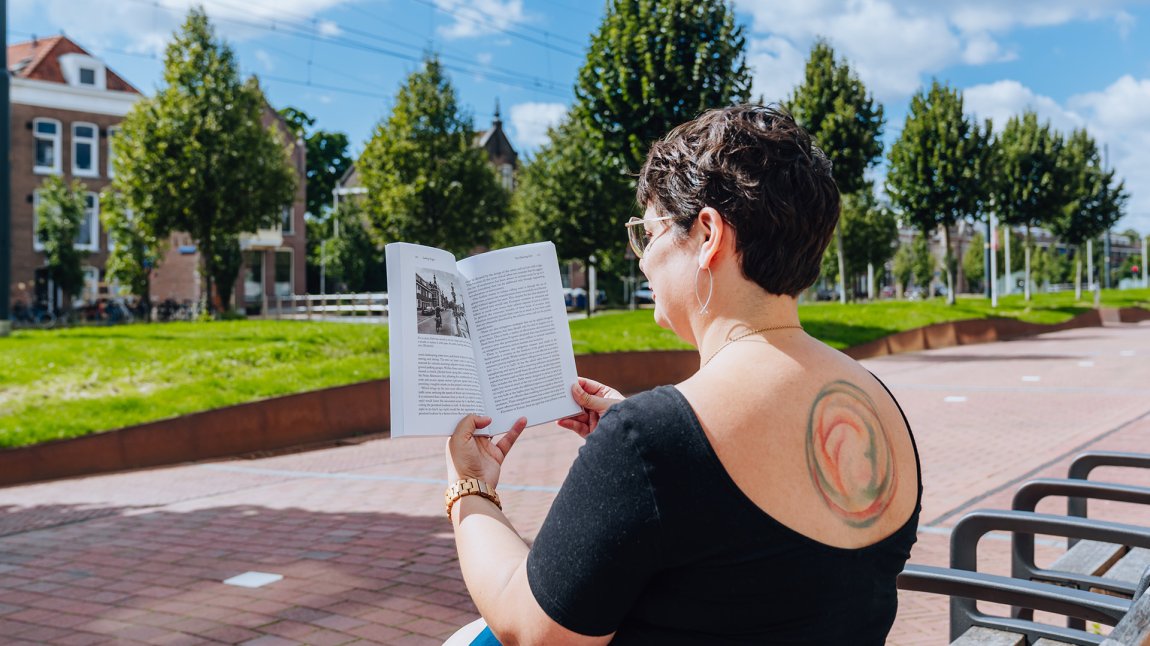
© Bring yourself - NBTC
